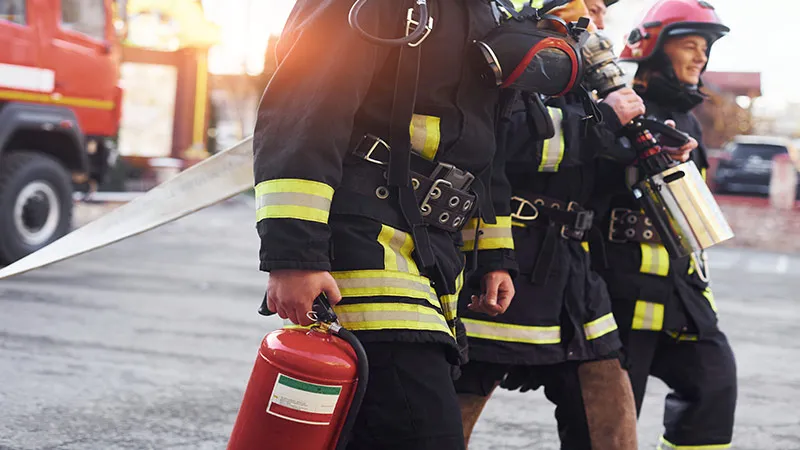When seconds count and lives hang in the balance, firefighters rush toward danger while everyone else runs away. These brave men and women represent one of society’s most essential services, combining centuries-old courage with cutting-edge technology to protect our communities from one of humanity’s oldest enemies: fire.
Firefighting encompasses far more than extinguishing flames. Modern firefighters serve as emergency medical technicians, hazardous material specialists, rescue coordinators, and community educators. They respond to natural disasters, vehicle accidents, medical emergencies, and countless other crises that threaten public safety.
This comprehensive guide explores the evolution of firefighting from ancient bucket brigades to today’s sophisticated emergency response systems. We’ll examine the tools, training, and tremendous challenges that define this noble profession while looking ahead to innovations that will shape firefighting’s future.
The Ancient Origins of Fire Protection
Firefighting traces its roots back thousands of years to early civilizations that recognized fire’s devastating potential. Ancient Rome established the first organized fire service around 6 AD under Emperor Augustus, creating the “Vigiles” – a force of 7,000 men who patrolled the city with buckets, axes, and ladders.
The Great Fire of London in 1666 marked a turning point in fire prevention philosophy. This catastrophic blaze destroyed over 13,000 homes and 87 churches, leading to revolutionary changes in building codes and firefighting methods. The disaster sparked the development of fire insurance companies, which began maintaining their own firefighting brigades to protect insured properties.
Colonial America adopted European firefighting traditions but added distinctive innovations. Benjamin Franklin established Philadelphia’s first volunteer fire company in 1736, creating a model that spread throughout the growing nation. These early American firefighters operated hand-pumped engines and formed bucket brigades, relying on community cooperation and shared responsibility.
The industrial revolution accelerated both fire risks and firefighting capabilities. Steam-powered fire engines appeared in the 1850s, dramatically increasing water pressure and pumping capacity. Professional fire departments gradually replaced volunteer companies in major cities, establishing standardized training and equipment protocols.
Modern Tools and Revolutionary Technology
Contemporary firefighting relies on an impressive arsenal of specialized equipment designed for various emergency scenarios. Fire engines carry thousands of gallons of water, multiple hose types, hydraulic rescue tools, and sophisticated pump systems capable of delivering water at precise pressures.
Aerial ladder trucks extend up to 100 feet, providing access to high-rise buildings and elevated rescue positions. These vehicles feature computerized stabilization systems and articulating booms that can navigate around obstacles while supporting substantial weight.
Personal protective equipment has evolved dramatically from simple leather helmets and canvas coats. Modern turnout gear incorporates multiple layers of flame-resistant materials, moisture barriers, and thermal insulation. Self-contained breathing apparatus (SCBA) units provide clean air for up to 45 minutes, featuring integrated communication systems and emergency alert devices.
Thermal imaging cameras revolutionized search and rescue operations by allowing firefighters to see through smoke and identify heat signatures. These devices help locate victims, detect hidden fires, and assess structural integrity in zero-visibility conditions.
Foam systems combat petroleum-based fires that water cannot extinguish effectively. Compressed air foam systems (CAFS) create lightweight, highly effective foam that adheres to surfaces and provides superior cooling properties compared to traditional water streams.
Rigorous Training and Essential Skills
Becoming a firefighter requires extensive education, physical conditioning, and ongoing skill development. Most departments mandate completion of state-certified fire academies that cover fire behavior, ventilation techniques, hazardous materials response, and emergency medical procedures.
Physical fitness standards ensure firefighters can perform demanding tasks while wearing heavy protective equipment. Training includes stair climbing with full gear, hose handling, victim carries, and ladder operations. Cardiovascular endurance and functional strength are crucial for maintaining effectiveness during extended emergency operations.
Technical rescue training prepares firefighters for specialized scenarios including vehicle extrication, confined space rescue, high-angle rope rescue, and water rescue. Many firefighters pursue additional certifications in emergency medical services, hazardous materials response, or fire investigation.
Continuous education keeps firefighters current with evolving technologies, building construction methods, and safety protocols. Regular drills practice coordinated team responses, equipment maintenance, and scenario-based decision making under pressure.
Confronting Danger and Overcoming Challenges
Firefighting ranks among the world’s most hazardous occupations, exposing personnel to extreme temperatures, toxic smoke, structural collapse, and unpredictable emergency situations. House fires can reach temperatures exceeding 1,000 degrees Fahrenheit, while wildland fires may spread at rates of several miles per hour.
Cancer rates among firefighters significantly exceed those of the general population due to repeated exposure to carcinogenic smoke and chemical compounds. Modern buildings contain synthetic materials that release dangerous toxins when burned, creating long-term health risks even with proper protective equipment.
Mental health challenges affect many firefighters who witness traumatic events and human suffering regularly. Post-traumatic stress disorder, depression, and suicide rates remain elevated within the firefighting community, leading to increased focus on psychological support services and peer counseling programs.
Budget constraints limit equipment upgrades, staffing levels, and training opportunities in many departments. Rural and volunteer fire departments face particular challenges maintaining adequate response capabilities with limited resources and declining volunteer participation.
Strengthening Communities Through Service
Firefighters play vital roles beyond emergency response, serving as community educators, safety advocates, and trusted public servants. Fire prevention programs teach children and adults about smoke detector maintenance, escape planning, and fire safety practices that prevent tragedies.
Public education initiatives address specific community risks such as wildland-urban interface fires, earthquake preparedness, or holiday safety. Firefighters conduct building inspections, review construction plans, and enforce fire codes that protect public safety.
Emergency medical services provided by fire departments often represent the majority of their call volume. Firefighter-paramedics provide advanced life support, trauma care, and medical transport services that save countless lives annually.
Disaster response capabilities make fire departments essential components of emergency management systems. Firefighters assist with evacuations, search and rescue operations, hazardous material incidents, and recovery efforts following natural disasters.
Innovation and the Future of Fire Protection
Emerging technologies promise to enhance firefighter safety and operational effectiveness significantly. Drone systems equipped with thermal cameras provide aerial reconnaissance of fire scenes, helping commanders make informed tactical decisions while maintaining safe distances.
Artificial intelligence applications analyze building layouts, weather conditions, and fire behavior patterns to predict fire spread and optimize resource deployment. Smart sensors installed in high-risk buildings can detect fires earlier and automatically notify emergency services with precise location information.
Advanced materials research focuses on developing lighter, more protective turnout gear with enhanced mobility and durability. Heads-up display systems integrated into helmets could provide real-time information about air supply, team locations, and building layouts.
Electric and hybrid fire vehicles reduce emissions and operating costs while maintaining performance standards. Some departments experiment with compressed air foam systems and water mist technology that require less water and provide superior fire suppression capabilities.
Predictive analytics help departments optimize station locations, staffing patterns, and equipment distribution based on historical incident data and community growth trends. These data-driven approaches improve response times and resource allocation efficiency.
Frequently Asked Questions
How long does it take to become a firefighter?
Basic firefighter training typically requires 12-16 weeks at a certified fire academy, followed by 6-12 months of probationary period on-the-job training. Additional specializations may require several more months of education.
What education is required for firefighting careers?
Most departments require high school diplomas or equivalent, though some prefer college coursework in fire science, emergency management, or related fields. Many firefighters pursue associate or bachelor’s degrees for advancement opportunities.
How dangerous is firefighting compared to other jobs?
Firefighting consistently ranks among the top 10 most dangerous occupations, with injury rates significantly higher than average jobs. However, improved training, equipment, and safety protocols have reduced firefighter fatality rates over recent decades.
Do firefighters only fight fires?
Modern firefighters respond to medical emergencies, vehicle accidents, hazardous material spills, natural disasters, and various rescue situations. Fire suppression typically represents less than 10% of most departments’ total call volume.
Building Safer Communities Together
Firefighting continues evolving as communities face new challenges from climate change, urban development, and emerging technologies. The dedication of firefighters who risk their lives protecting others remains constant, even as their tools and techniques advance.
Supporting local fire departments through adequate funding, volunteer participation, and fire prevention practices helps ensure these essential services remain effective. Every smoke detector battery changed, every escape plan practiced, and every fire safety rule followed honors the sacrifices firefighters make daily.
The future of firefighting depends on continued innovation, community support, and the enduring courage of individuals willing to answer the call when disaster strikes. By understanding and appreciating the complexity of modern firefighting, we can better support these heroes who stand ready to protect us all.

